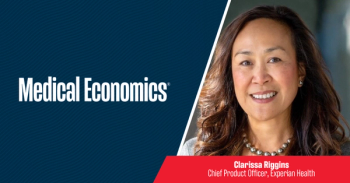
3 ways to improve the patient experience
From booking first appointments to follow-ups and final billing, providers should consider how they can make the patient experience better.
Healthcare is a universal experience. At some point, everyone touches the industry as either a patient, caregiver or provider.
Unfortunately, the U.S. healthcare industry is not one known for its emphasis on customer service. An alarming 81 percent of
Seeking greater value for their money’s worth, patients are increasingly turning to providers who regularly connect with them and offer flexibility with how they schedule appointments, share information and make payments.
There is no such thing as a one-size-fits-all approach to patient engagement. Healthcare providers need to think holistically about how each touchpoint with a patient shapes their overall experience. From booking their first appointment to follow-ups and final billing, providers should consider how they can make the experience more thoughtful, starting with these tips:
Offer speedy scheduling and check-in
Getting buy-in from staff who manage the majority of the practice’s non-clinical work is critical to improving the patient experience. According to a recent study,
To improve the patient experience, make sure appointments can be easily booked online through a patients’ phones, tablets or desktop computers. Once a patient arrives, they should not be made to wait long, asked to fill out information previously provided, or charged incorrectly.
Be warned: If the check-in-and-out process is not quick and painless, patients might start looking for more convenient, customer-friendly options.
Meet patients where they are – on their phones
More than 95 percent of Americans own a cell phone and 90 percent of text messages are read within three minutes, making text messaging the quickest way to reach a majority of patients. Even better, texting is cost-effective for practices to implement and offers more flexibility for patients vs. other traditional communication methods.
Using HIPAA-compliant secure text, for example, healthcare providers can efficiently send patients reminders about upcoming appointments, collect photos of insurance cards, deliver lab results, receive payments and more. And, unlike traditional patient portals, which
Making access to records and provider communications more accessible means patients are more likely to be engaged in their care plans, resulting in better outcomes and an improved patient experience.
Offer video to replace phone calls for more personalization
Telehealth has emerged in the last few years as a way to reach underserved rural patients, as well as for practices to triage patients and reduce unnecessary office visits. Adoption has been limited due to issues with reimbursements, but video doesn’t have to be just about a paid visit. Now, doctors are using live video chat applications in lieu of traditional phone calls because of its personal touch and ability to observe a patient’s condition remotely.
For example, say a patient is sent home after an office visit but feels their condition is worsening. They can send a text message to office staff, who can flag it to the patient’s doctor, who can jump on a quick video call to determine if more information is needed or if the patient should seek immediate care.
In this way, live video can improve the patient experience by giving them another channel to connect with their provider while also lowering costs from unnecessary office visits.
Such a connection is necessary in today’s world. A personal relationship can mean the difference when it comes to patient loyalty if quality service, cost and convenience are comparable. And telehealth can help providers differentiate themselves as part of a holistic strategy to keep patients coming back.
Indeed, there is no such thing as a one-size-fits-all approach to patient engagement. This process starts long before patients ever enter the office and continues after they leave. To be successful, healthcare providers need to consider each potential interaction with consumers, identify sources of potentially negative experiences, and offer technology-enabled solutions that meet patient demand for convenience and flexibility.
Michael Morgan, is the CEO of
Newsletter
Stay informed and empowered with Medical Economics enewsletter, delivering expert insights, financial strategies, practice management tips and technology trends — tailored for today’s physicians.

















